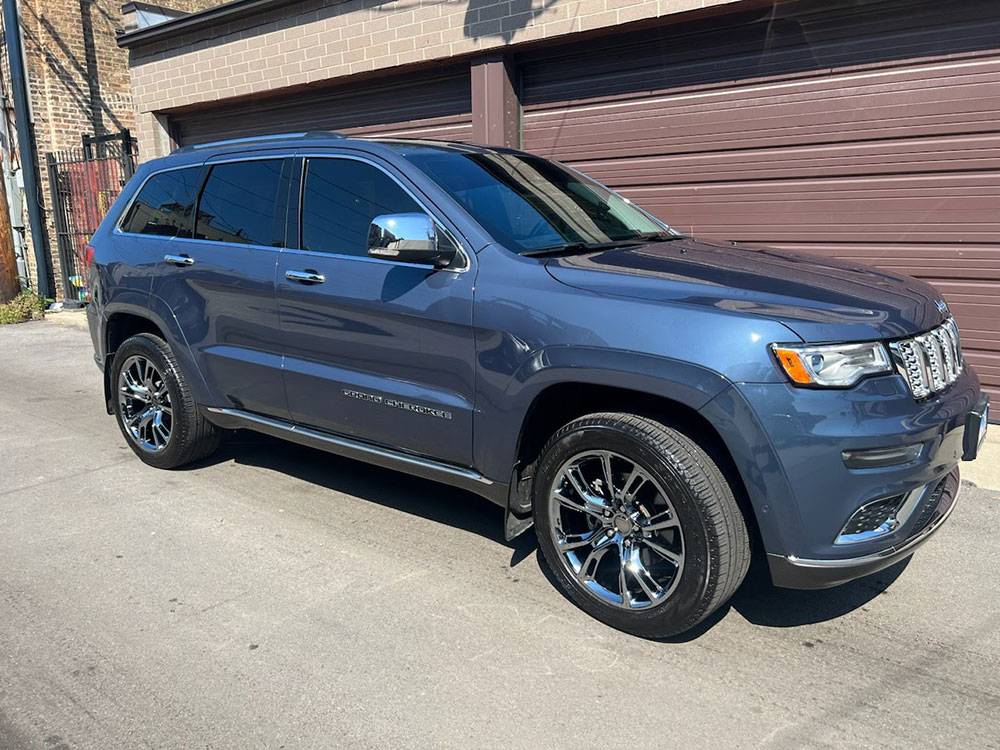2014 Jeep Grand Cherokee 3.6 Firing Order

The 2014 Jeep Grand Cherokee is a popular SUV, known for its blend of on-road comfort and off-road capability. A key component of its performance is, of course, its engine. For many, the 3.6-liter Pentastar V6 is the engine of choice, offering a good balance of power and fuel efficiency. Understanding the engine's firing order is essential for diagnosing misfires, performing tune-ups, and ensuring overall engine health. This article dives into the 2014 Jeep Grand Cherokee 3.6L's firing order, along with related information useful for both enthusiasts and professionals.
Understanding Firing Order
The firing order refers to the sequence in which the cylinders of an internal combustion engine fire. Each cylinder in a multi-cylinder engine goes through a four-stroke cycle: intake, compression, combustion (power), and exhaust. The firing order dictates which cylinder initiates the combustion stroke next. This sequence is meticulously designed by engineers to minimize vibrations, balance the engine, and optimize performance. A correct firing order is absolutely critical for smooth engine operation and preventing damage.
2014 Jeep Grand Cherokee 3.6L Pentastar V6 Firing Order
The 2014 Jeep Grand Cherokee equipped with the 3.6L Pentastar V6 engine has a firing order of 1-2-3-4-5-6. This means that cylinder number 1 fires first, followed by cylinder number 2, then 3, and so on, until cylinder number 6 completes the cycle.
Cylinder Location: It's crucial to know where each cylinder is located. When facing the engine from the front of the vehicle (where the accessory belt is), the cylinder arrangement is as follows:
- Right Bank (Passenger Side): Cylinders 1, 3, and 5 (front to back)
- Left Bank (Driver Side): Cylinders 2, 4, and 6 (front to back)
This configuration is standard for most V6 engines and is essential for accurately identifying the cylinders when performing diagnostic or maintenance tasks.
Why is the Firing Order Important?
Knowing the firing order is crucial for several reasons:
- Diagnosing Misfires: A misfire occurs when a cylinder fails to fire correctly. By knowing the firing order, a mechanic can systematically check each cylinder to identify the source of the misfire. This is typically done using diagnostic tools like a scan tool to read engine codes, or by manually inspecting spark plugs, ignition coils, and fuel injectors.
- Distributorless Ignition System (DIS): The 2014 Grand Cherokee 3.6L uses a distributorless ignition system, meaning there's no distributor cap. Instead, each cylinder (or pair of cylinders in some systems) has its own ignition coil. While this simplifies some aspects of maintenance, understanding the firing order is still vital for ensuring the correct coil is firing at the appropriate time.
- Timing: Proper engine timing relies on the correct firing sequence. Issues with timing can lead to poor performance, reduced fuel economy, and even engine damage.
- General Maintenance: When replacing spark plugs or performing other engine maintenance, understanding the firing order helps ensure that everything is connected correctly.
Common Issues Related to Firing Order and Ignition
Several issues can disrupt the correct firing order, leading to engine problems:
- Faulty Spark Plugs: Worn or damaged spark plugs are a common cause of misfires. Regular replacement according to the manufacturer's recommended interval is essential.
- Failed Ignition Coils: A faulty ignition coil can prevent a cylinder from firing. These can be tested individually using a multimeter.
- Fuel Injector Problems: A clogged or malfunctioning fuel injector can starve a cylinder of fuel, leading to a misfire.
- Vacuum Leaks: Vacuum leaks can disrupt the air-fuel mixture, causing misfires and other performance issues.
- Timing Chain Issues: Although less common, stretching or failure of the timing chain can alter the engine's timing, drastically affecting the firing order and causing severe engine damage.
Maintenance Tips for the 3.6L Pentastar V6
To keep your 2014 Jeep Grand Cherokee 3.6L running smoothly, consider these maintenance tips:
- Regular Oil Changes: Use the correct type of oil and change it at the recommended interval (typically every 5,000-7,500 miles).
- Spark Plug Replacement: Replace spark plugs according to the manufacturer's schedule (often around 100,000 miles).
- Check Ignition Coils: Periodically inspect ignition coils for signs of damage or wear.
- Fuel System Cleaning: Use a fuel injector cleaner periodically to help prevent clogs.
- Inspect for Vacuum Leaks: Regularly check for vacuum leaks, especially around hoses and intake manifolds.
Conclusion
Understanding the 2014 Jeep Grand Cherokee 3.6L's firing order is a valuable asset for anyone working on or maintaining this popular SUV. Knowing the firing order (1-2-3-4-5-6) empowers you to diagnose misfires, perform maintenance effectively, and ultimately keep your Grand Cherokee running at its best. Remember to consult the vehicle's service manual for specific torque specifications and other detailed information.
